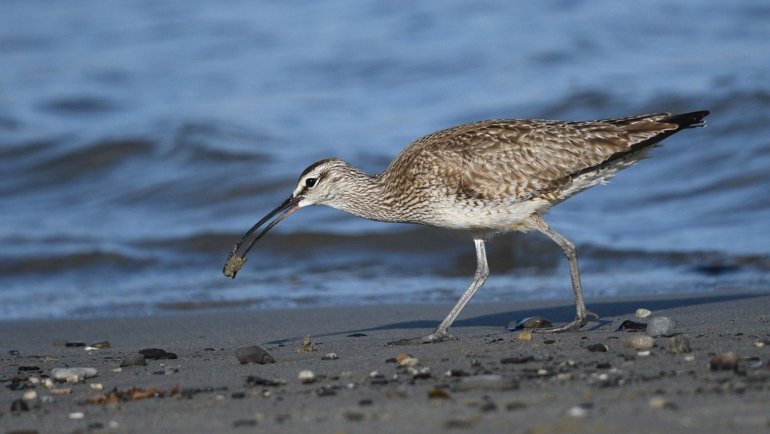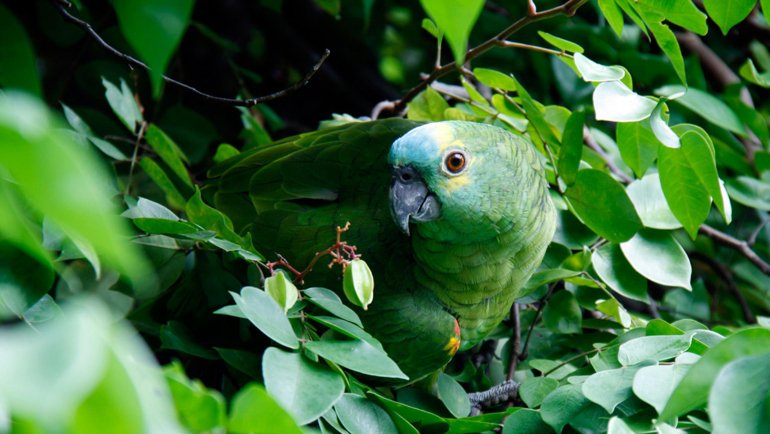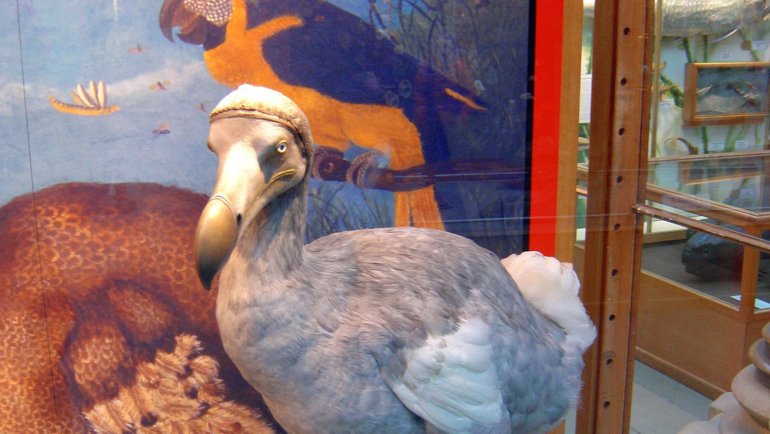Adélie penguins live in one of the world’s harshest and most extreme regions – and it probably contributes to making them so fascinating! But where do they live exactly? In what types of habitats can they be found? And how can you actually go and see Adélie penguins in the wild? These are the questions that we will answer in this article.
Without further ado, let’s get started!
Top 4 Predators of Adélie Penguins
1. Leopard Seal
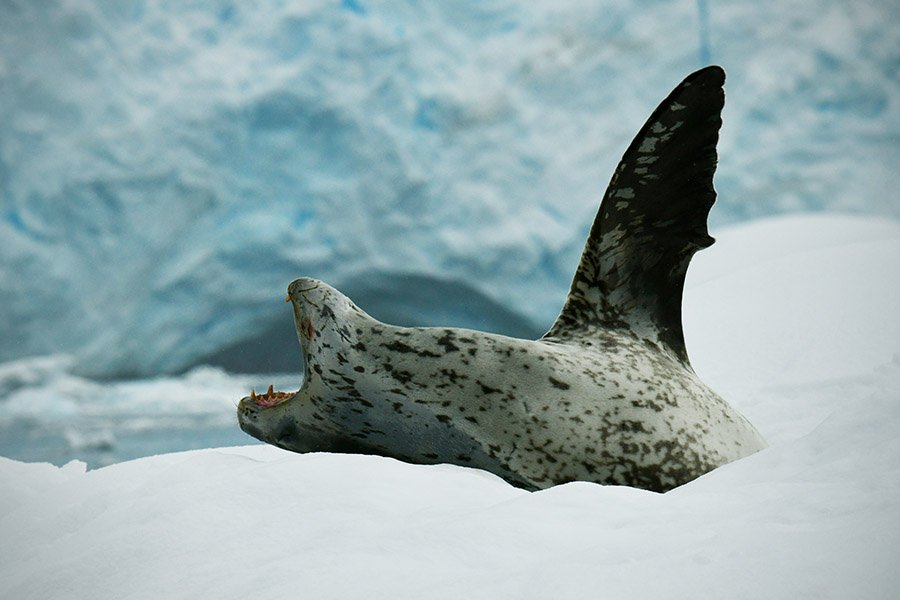
Leopard seals (Hydrurga leptonyx) are a major predator of Adélie penguins in the Antarctic ecosystem. These seals are formidable hunters, known for their agility, speed, and powerful jaws. These allow them to capture and consume a variety of prey – whatever they can get their teeth on, including fish, krill, Adélie and other penguin species, and cephalpods.
Leopard seals are ambush predators, often waiting near the edge of the ice or just beneath the surface of the water to surprise and catch penguins as they enter or exit the water. Their elongated, torpedo-shaped bodies enable them to move swiftly in the water, making it difficult for Adélie penguins to escape once they have been targeted.
2. Killer Whale / Orca
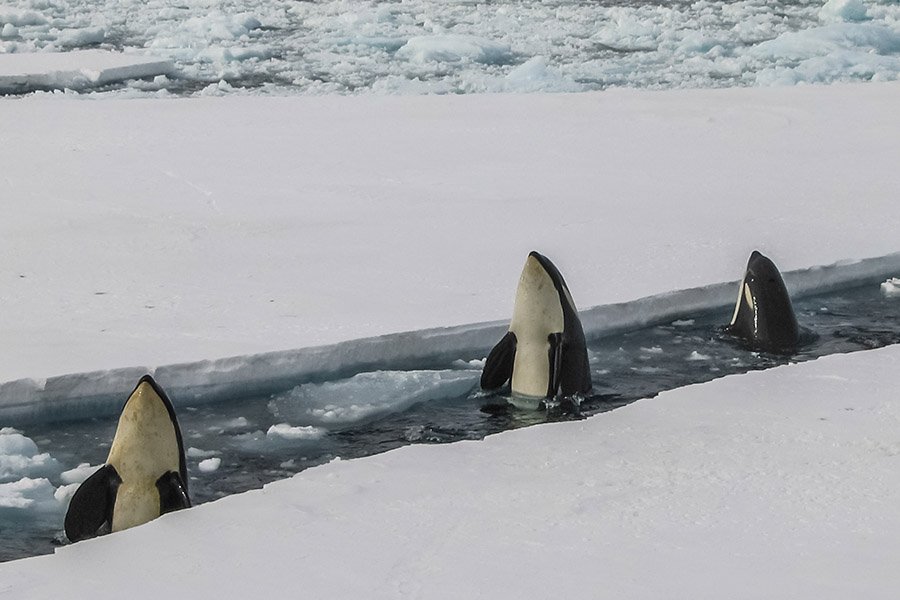
Orcas, or killer whales (Orcinus orca), are another significant predator of Adélie penguins. These highly intelligent marine mammals have sophisticated hunting techniques and they work together in coordinated groups called pods to increase the success rate of their hunts. Orcas are apex predators, feeding on a diverse range of prey, including fish, seals, and various penguin species, including Adélie penguins.
When hunting penguins, orcas can use different strategies depending on the situation. Some orcas have been observed creating waves to wash penguins off ice floes, while others may chase and corner penguins in the water. Orcas are extremely fast swimmers, reaching quite amazing speeds of up to 56 km/h (34 mph), so it takes a very agile penguin to escape an orca.
3. Skua
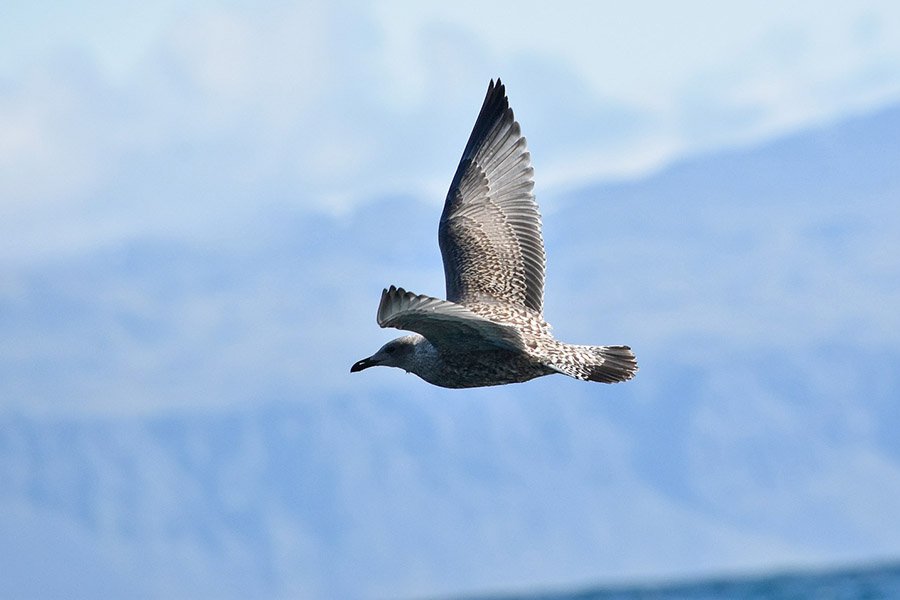
Skuas, particularly the South Polar Skua (Stercorarius maccormicki), is another predator of Adélie penguins. They don’t attack the adults, but target their eggs and chicks. Skuas are large, aggressive seabirds, and are very opportunistic when it comes to food.
During the Adélie penguin breeding season, skuas patrol penguin colonies in search of unprotected eggs and vulnerable chicks. They may employ various tactics to access their prey, such as waiting for the adult penguins to leave the nest unguarded. Sometimes, they even harass adult penguins to force them off their nests! This way, they can expose the eggs or chicks so they can attack them.
4. Giant Petrel
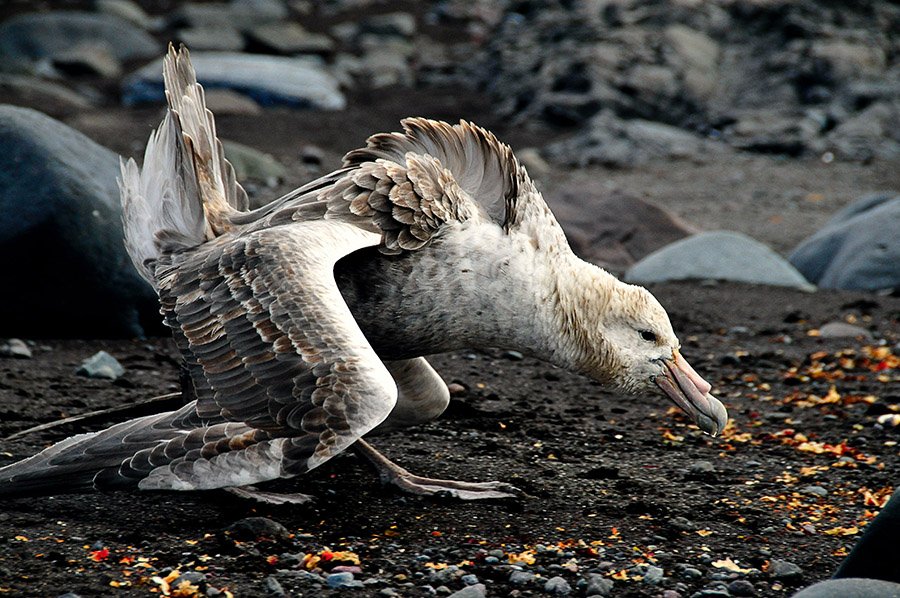
Giant petrels, including the Southern Giant Petrel (Macronectes giganteus), also are predators of Adélie penguins. Just like skuas, they prey on their eggs and chicks. These large seabirds are often referred to as the “vultures of the Southern Ocean”. They are opportunistic and have a very varied diet, including fish, krill, carrion… and penguin eggs.
When Adélie penguins are breeding during the summer, giant petrels will target penguin colonies in search of easy meals, looking for unguarded eggs and vulnerable chicks. Giant petrels are powerful and agile in flight. They not only use their sharp beaks to snatch up eggs and chicks, but they also even attack weak or injured adult penguins.
How Do Adélie Penguins Defend Themselves and Avoid Predators?
To avoid predation, Adélie penguins primarily rely on their agility and great vision to detect and evade leopard seals and orcas.
On land, when they are breeding, Adélie penguins have to be constantly on their guard to protect their offspring from skuas and petrels. Adult penguins are known to be fiercely protective of their nests, often working together to drive off the large seabirds. They usually use their beaks and wings to fend off any predator that comes too close to their nests.
